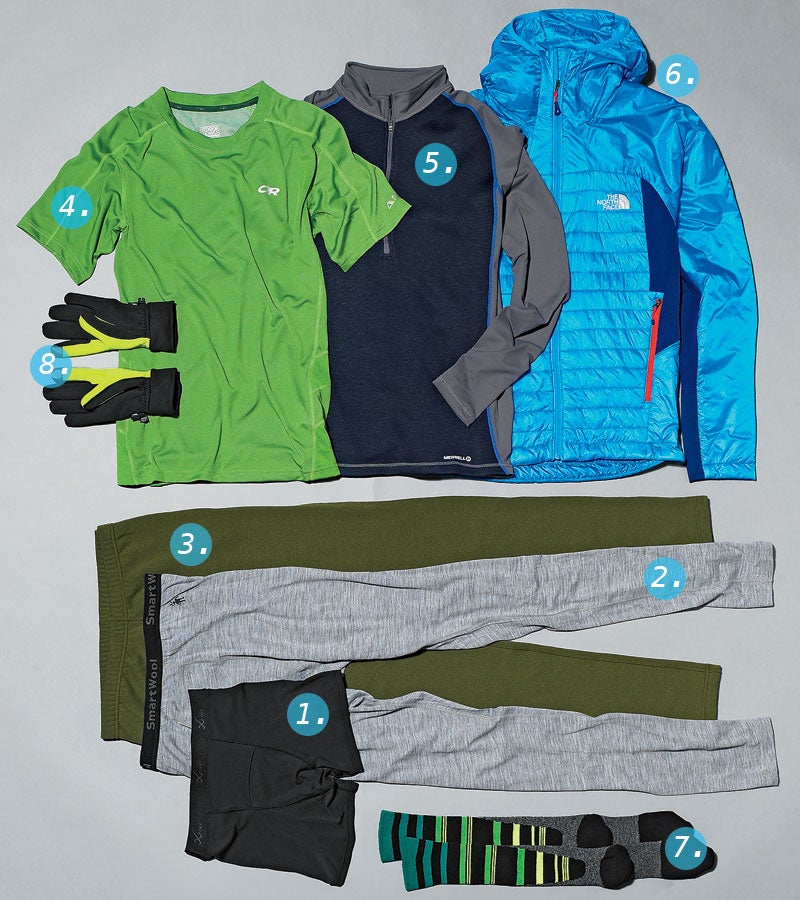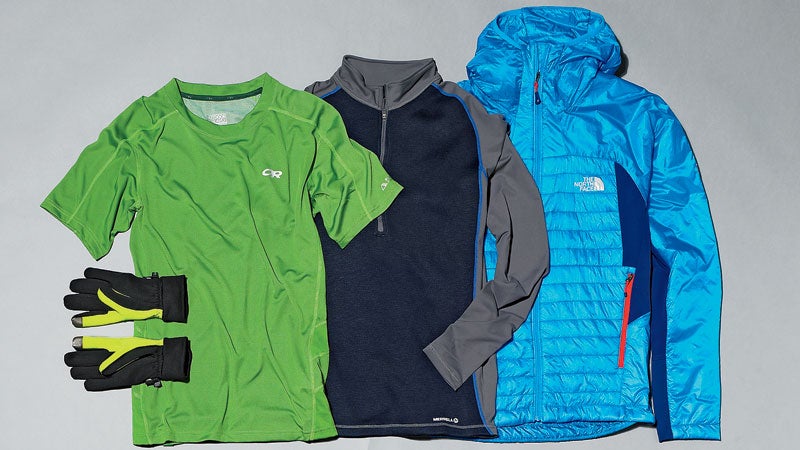Whether you’re running or skiing, learn the optimal combination of cold-weather gear with our guide to winter layering.
1. Briefs
Compression shorts are about moisture,not warmth. CW-X’s LiteFit ($35) are made of a proprietary quick-dry fabric that wicks moisture away from your nethers in dry cold and wet heat. Bonus: silver fibers in the fabric kill bacteria and neutralize odors—adios, junk funk.
Best For: Everyone
2. Light Bottom
We tested dozens of bottoms, and none of them combined form, comfort, and durability as admirably as SmartWool’s NTS Micro150 ($65). Made of 100 percent merino wool, they feature low-profile, flat-seam construction along the hips, thighs, and calves to eliminate chafing.
Best For: Fall Runners
3. Mid Bottom
Black Diamond pairs light and heavy fleece in the Co-Efficient ($109). The result is an amply insulating piece that breathes like something half its weight. When temperatures drop below zero, wear it with a light underlayer; when they climb to 32, use it alone.
Best For: Dry Cold
4. Light Top
We sweated through Outdoor Research’s Torque ($59), and within 20 minutes of stopping it was bone dry. Credit the performance of its quick-wicking Polartec Power Dry material. Bonus: the long-sleeve version ($69) has venting mesh side panels and fold-down hand covers.
Best For: High Output
5. Mid Top
Stretchy, high-wicking polyester in the arms, shoulders, and sides in Merrell’s Alpino ($109) provides flexibility in the areas you move most. The reason it’s the best option for the lift: thick wool-and-polyester panels on the back and chest, which focus warmth in your core.
Best For: Lift Riders
6. Heavy Top
Synthetic Polartec Alpha fill around the core of the North Face DNP ($180) makes it warmer than the other layers here—perfect for cold-weather hiking and snowshoeing. It works as a standalone on the way up and, paired with a shell, has enough insulation for the descent.
Best For: Mountaineers
7. Socks
When the mercury drops, reach for thicker socks. Fits’ Light Ski OTCs ($24) keep feet snug down to zero degrees.
8. Gloves
Protect your digits with REI’s Powerflyte gloves ($25). The soft-shell material keeps hands warm down to 20 degrees.



